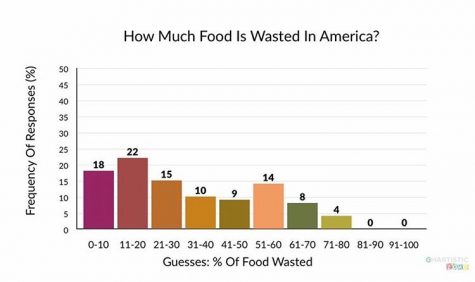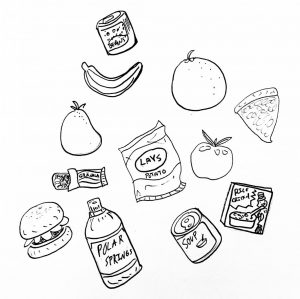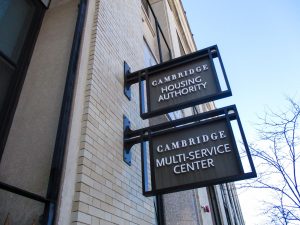Businesses and Students Are Committed To Sustainability
March 6, 2019
Since October 1st, 2014, Massachusetts provided state regulations that prohibit commercial organizations from disposing more than a ton of organic waste per week, requiring nearly 2,000 businesses and institutions to find more sustainable alternatives for kitchen scraps and produce that may not make the “aesthetic” cut.
“[Food sustainability] is increasingly important; it’s a moral imperative,” says CRLS sociology and economics teacher Brendan Kells. “We have enough food to feed every mouth. It’s simply about the allocation of resources. It’s clearly just a failure of our economic systems.”
Though the food waste issue is rapidly growing, few students at CRLS admit that they are familiar with its severity. In a general poll taken of 100 CRLS students from ages 14 to 19, only 8% knew the correct percentage of food that is wasted in America, while only 25% guessed within 20 points of the actual statistic.

Over the past few years, local nonprofits like Food For Free, Boston Area Gleaners, and the Greater Boston Food Bank have expanded their frame of food rescue. Food For Free, established in 1981, focuses mainly on recapturing fresh food that might otherwise be discarded. Not only is their work an effort to reduce food waste, but they also aim to secure access to produce and healthy meals for individuals in need, from families living paycheck-to-paycheck to the homeless.
As of this past fall, some CRLS students have adapted this initiative from these nonprofits, bringing it closer to the hearts of the student body. CRLS senior Miriam Alvarez-Rosenbloom is at the forefront of these sustainability efforts. In October, Alvarez-Rosenbloom co-founded the Food Justice Club, a student initiative to build a small garden outside the Rindge Building. But thisis only part of her effort. “We’re focused on a lot of issues including food waste, food access, and food insecurity in our community,” she explains.
When asked about the food waste fact she finds most shocking, Alvarez-Rosenbloom recounted that 40% of food is wasted in America. “Every day, we waste enough food to fill a football stadium,” she explains. “Not only is there a surplus of food being wasted, there’s a huge need for that food. It’s just about finding a way to bridge that gap.”

Senior Megan Kelliher spoke highly of the Food Justice Club, saying, “I think it’s a good idea.…It’s useful in many ways and could be a cool project for other schools, too.”
Alvarez-Rosenbloom’s environmental concerns are eased by the Cambridge Public School System’s composting efforts, however. Since February 2012, expanding the cafeteria’s disposal system has encouraged students to separate their waste into the appropriate bins to cut down on the material sent to landfills.
Leonardo Escobar ’18, now attending Boston College, spoke to this: “I think more institutions and societies as a whole should replicate what CRLS does with their lunch room; even [Boston College’s] isn’t as organized. We do have a lot of great ways to dispose of food—liquid, recycling, trash, compost—but it could be implemented in a much better way.”
In terms of food allocation, Mr. Kells echoes Escobar’s praise for CRLS’ current efforts: “I think CRLS already does a really good job. We have a food pantry. The resources are there.” However, in accordance with the key concerns of local nonprofits, Kells also acknowledges that there is even more to this issue: “Stigma is our greatest challenge; we need to do work on that as a school community.”
This piece also appears in our February 2019 print edition.









